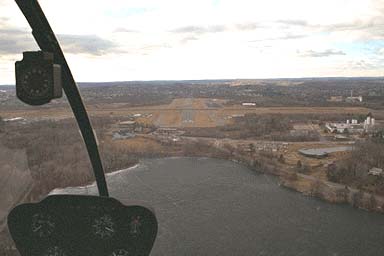Which statement is true regarding the achievement of an adequate standard of performance?
A flight instructor should devote major effort and attention to the continuous evaluation of student performance.
Flight instructors can affect a genuine improvement in the student/instructor relationship by not strictly enforcing standards.
Flight instructors fail to provide competent instruction when they permit students to partially learn an important item of knowledge or skill.
The answer is C. I thought about a concept in my primary training (the first phase of Initial Entry Rotary Wing - IERW) that I didn't grasp initially that haunted me in subsequent training. And I mean for a long while. Even to this day I can't remember what the name is for this technique, so any of you instructors out there are welcome to comment below with the correct name.
This integral knowledge that I never fully grasped was that concept of being able to see where you were going to touch down in the helicopter and maintain a constant angle of descent to it, achieving a stabilized approach. I remember it being explained to me that it was some kind of "cone of action" or movement or something or other.
 The idea was that you were supposed to be able to look at your intended landing point ( end of a runway or section of a field, etc.) and see no movement at that particular point. However, everything around that point should be moving (albeit minimally). Things in front would be moving forward, things to the side should be moving farther out, and things behind should be moving backward. If you got this concept, which I hadn't, you would be able to maintain a constant descent angle through out your approach and landing, preventing you from under or over arcing from the straight line that could ideally be drawn from your point of initial descent to your touchdown point (possible action for under arcing= add power, over arcing = subtract). Pictures (and a more thorough explanation) at http://www.copters.com/pilot/na_picts_jpeg.html
The idea was that you were supposed to be able to look at your intended landing point ( end of a runway or section of a field, etc.) and see no movement at that particular point. However, everything around that point should be moving (albeit minimally). Things in front would be moving forward, things to the side should be moving farther out, and things behind should be moving backward. If you got this concept, which I hadn't, you would be able to maintain a constant descent angle through out your approach and landing, preventing you from under or over arcing from the straight line that could ideally be drawn from your point of initial descent to your touchdown point (possible action for under arcing= add power, over arcing = subtract). Pictures (and a more thorough explanation) at http://www.copters.com/pilot/na_picts_jpeg.htmlObviously, this is a purely visual maneuver and would take, for example, just small corrections in power if the target settings were hit straight off. But, if you (or me, in this case) never understood this concept, too large corrections would be made too late and increase the possibility that I talked about in my last post, where the instructor got back to the table and said, "you were too high on the first one, too slow on the second," etc., and never a stabilized approach would be achieved.
I was working way too hard trying to cover up my ignorance when I should have just admitted my confusion. I'm not sure when the light bulb went on in my head, but once it did, it solved a multitude of problems and let me focus on the real subject of the lesson at hand.
No comments:
Post a Comment